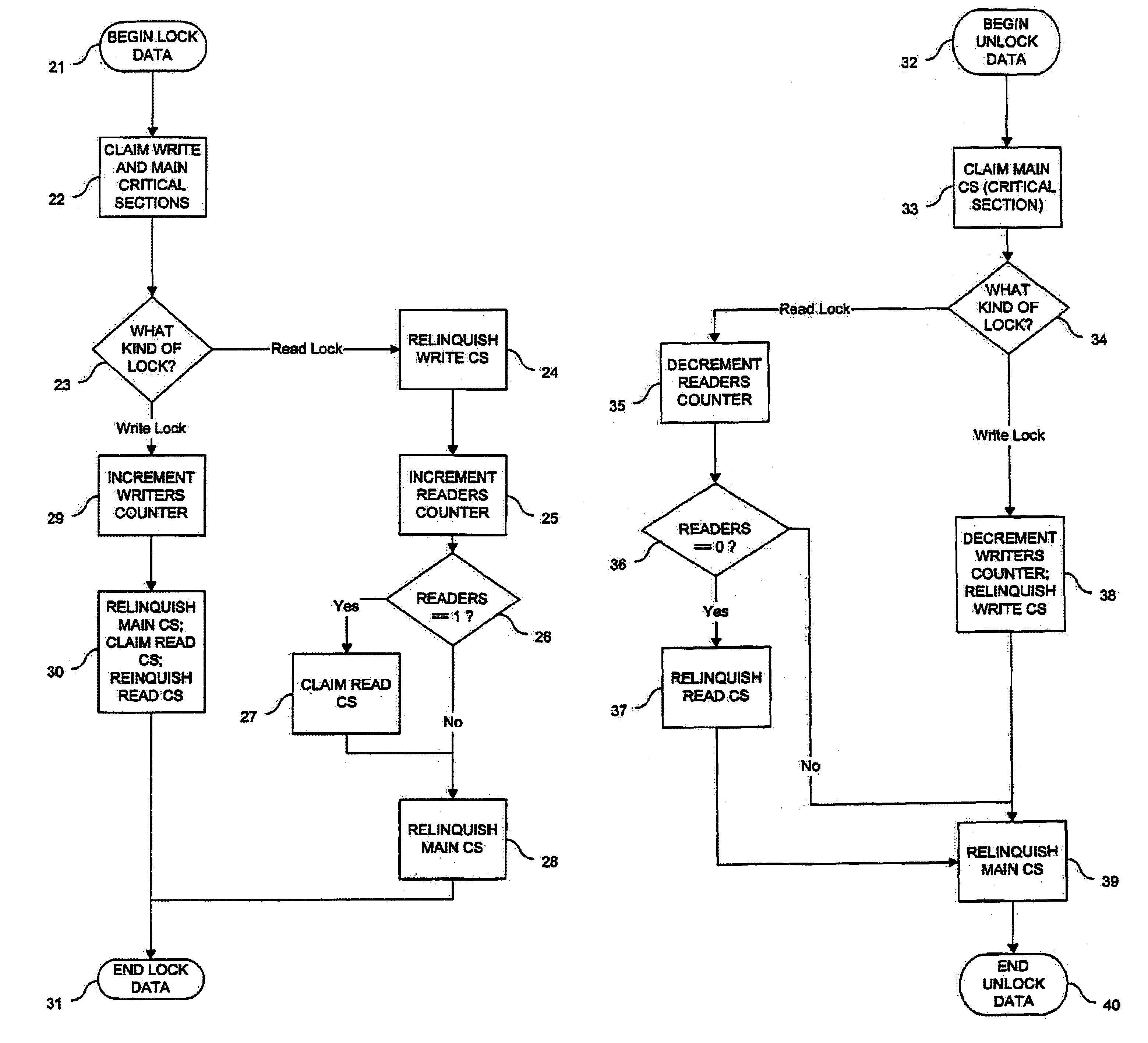Architecture for a read/write thread lock
a thread lock and read/write technology, applied in the field of computer programming, can solve the problems of unreadable gibberish of programs, inability to represent useful value of fabricated numbers, and inability to solve problems such as drawbacks, and achieve the effect of solving problems such as inability to read/write thread locks
- Summary
- Abstract
- Description
- Claims
- Application Information
AI Technical Summary
Benefits of technology
Problems solved by technology
Method used
Image
Examples
Embodiment Construction
Overview
[0020]in modern computing environments, it is frequently possible for several sets of computer instructions to execute at the same time. Many computing environments, such as an environment that includes a typical personal computer operating system, allow a user to have two or more computer programs running at the same time, where the two programs run in parallel. For example, a user may be playing a video game on a personal computer, while downloading a file from the Internet at the same time. Several operating systems, such as the MICROSOFT WINDOWS 95 / 98 / NT / 2000 family of operating systems, also have the capability for a single computer program to have two or more threads, where the threads execute concurrently. For example, a database application program might perform routine maintenance (e.g., sorting, garbage collection, etc.) at the same time that it permits a user to access the data. In this case, the user interface to the data could run on one thread, while the variou...
PUM
 Login to View More
Login to View More Abstract
Description
Claims
Application Information
 Login to View More
Login to View More - R&D
- Intellectual Property
- Life Sciences
- Materials
- Tech Scout
- Unparalleled Data Quality
- Higher Quality Content
- 60% Fewer Hallucinations
Browse by: Latest US Patents, China's latest patents, Technical Efficacy Thesaurus, Application Domain, Technology Topic, Popular Technical Reports.
© 2025 PatSnap. All rights reserved.Legal|Privacy policy|Modern Slavery Act Transparency Statement|Sitemap|About US| Contact US: help@patsnap.com



